The minivan was part of a convoy carrying Dr Porntip Rojanasunan and her associates to the Khao Lak district to commemorate the 10th anniversary of the Indian Ocean tsunami tomorrow.
Many VIPs including Prime Minister Prayuth Chan-o-cha, his deputy, Tanasak Patimapragorn,as well as ambassadors from at least a dozen countries are expected to be making their way from Phuket International Airport along the notoriously risky roads through southern Phang Nga to mark the day.
Dr Porntip's daughter was only injured slightly in the glancing head-on collision near the town of Tai Muang about 8.40am
The convoy was able to continue on, with thousands expected to gather to commemorate 5395 Thai and non-Thai victims and the generous activities in response by the entire world.
The pathologist - noted for her spiky red hair - led the identification process that restored thousands of unnamed victims to their families during the first 40 days until the international Thailand Tsunami Victim Identification team, assembled from 31 countries, took charge.
The unprecedented forensic achievement of identifying more than 3000 nameless bodies has been showcased in Amanda Blue's 90-minute documentary, 'After The Wave,' which is being screened on television around the world this month.
Dr Porntip's efforts have been acknowledged, although it's possible some early wrong visual identifications led to complications in the naming process. The international team acknowledges two errors. More probably occurred early on, before international standards were applied.
Phuketwan recently interviewed a woman in the village of Nam Khem, north of Phuket, who identified the body of her Thai-Australian sister then had it cremated, only to learn one year later from the TTVI that she'd regained the wrong body.
In another case after the tsunami, a local man was given back the body of his wife, only to discover some months later that the wrong woman had been cremated.
Some of the identification mistakes explain why 369 victims remain unnamed in graves at the Tsunami Victim Cemetery north of Phuket. Their bodies have been placed in metal coffins within concrete tombs to preserve the DNA in the hope that their names can be restored in the future.
Around the world, the Indian Ocean is being commemorated tomorrow. About 230,000 people were killed in 14 countries around the region after an undersea earthquake off Indonesia. Since then, a tsunami warning system has been put in place.
https://www.youtube.com/watch?v=cFKWg5eCVJw





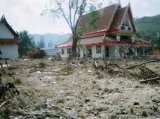
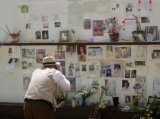
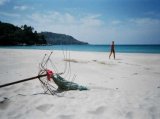

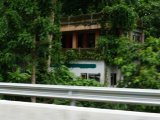
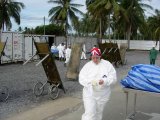



Are the DNA samples take from the 369 victims in metal coffins? Are dispatches sent to other governments to ask people who have a missing family members to provide DNA samples in order to match? 'Hope' and do nothing ( 10 years now) is not much hope giving. By now all the 298 victims of the Malaysian passenger flight shot down above Ukraine a few months ago are identified.
Posted by Kurt on December 25, 2014 13:45
Editor Comment:
Totally different disasters, Kurt. To compare the loss of thousands in a tsunami with a plane crash is apples and cherries. There were some mistakes that complicated matters. And remember the Burmese laborers and their families along the coast. The Burmese government provided no help in finding their families. International standard is 99.9 percent. In some cases, pathologists would have a fair idea who the unnamed victims might be. Yes of course there are DNA samples for them all - except for body parts and cremated remains - but no matches.